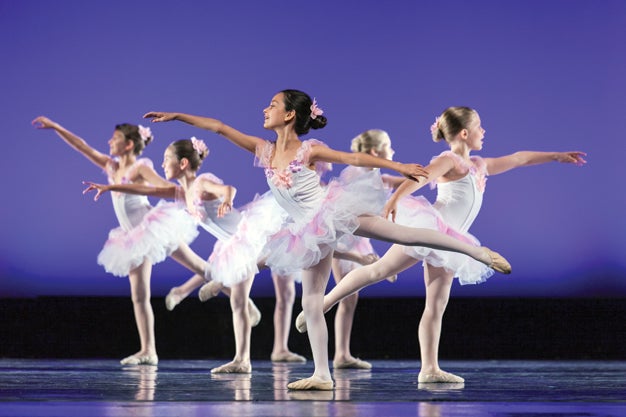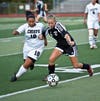Tips From a Pro: How to Take Better Photos of Your Kids
How do the pros do a parent's job?

The recital, the birthday party, the big game. It’s your job to photograph these events, but each presents its own challenges. We wondered: How would a pro do it? So we got tips from top performance, wedding, and sports shooters to help make sure you’re ready to capture the moments you want tor remember.
The Dance Recital
With low light and challenging angles, performance photography can be fraught with peril. So for moms and dads wanting to capture their budding ballerinas and other stage stars, Sharen Bradford, a Dallas pro who specializes in dance performances, advises: In advance of the performance, find out the studio’s photo policies. Many don’t allow parents to shoot during live shows, but will during dress rehearsals.
On the day of, “arrive early to get a seat that’s about ¼ to ½ way into the house, depending on your lens’ focal length. Avoid the front, because the angle is too steep,” she says. “And don’t run up and down the aisles looking for great angles. Find a spot and stay put.
For sharp images in low light, wait to fire the shutter until your child strikes and holds a pose.
Photo: Sharen Bradford
“Leave the compact camera at home, and shoot with a DSLR. The compact’s shutter release won’t be responsive enough, and your photos will be annoyingly ‘behind the beat,’ as dancers say,” adds Bradford. Instead, use a DSLR with a fast framing rate, high ISOs, and HD video. Video is nice because it lets you tripod-mount the camera, frame, start the capture, and sit back and enjoy your child’s performance.
For lenses, “I always recommend f/2.8s, and my favorite is a 70–200mm,” she says. Rent if you don’t own. For camera support, a monopod works for shooting from the audience or a tripod if you’re working with a longer, heavy, tele from the back of the house. A noise jacket like the Camera Muzzle ($140, street) will dampen shutter sound.
A common mistake parents make is using their camera’s auto mode. It defaults to a lower ISO and shutter speed than is needed to capture action in low light, warns Bradford, and the result is balletic blur. Use shutter priority or manual, and set a shutter speed of at least 1/160 sec. “Start at ISO 1600, and then dial up the ISOs to get to that 1/160 sec.”
Another problem with setting the auto mode: It may automatically engage the camera’s built-in flash. You don’t want this. Flash is not permitted in most theaters and can be disorienting to the dancers.
When composing shots of younger dancers, zoom in on facial expressions and hand gestures. For older performers whose technique has evolved, you can focus on technique, too. Look for pointed feet, straight legs, and clean poses. “Try to anticipate peak action by watching the knees. When she bends before a jump, shoot as your child springs upward,” says Bradford. Your photos will earn a standing ovation.
Tip: Framing the Star
“Focus on your child only. Don’t worry about groups. Young children are all ‘soloists,’ rarely performing the same step at the same time,” says professional performance photographer Sharen Bradford. Zooming out to capture the group can make for chaotic pictures.
The Birthday Party
Who better for tips on party shooting than wedding photographers? We interviewed four favorites: Amy Grace of Southern California; Lora Swinson of Denver; and Rich Lavigne and Ron Antonelli of South Plainfield and Oradell, New Jersey, respectively. All four touched on similar preemptive strategies that can give parents a leg up: Prep the party spaces, plan and pace the celebration, and pay attention to lighting.
Start your party coverage by carefully picking party venues with an eye toward light. Amy Grace advises “reading the light. Light is the first and most important thing” and you should organize the day around it. Plan activities for the best-lit areas of your home, and time them so those areas are at their brightest.
If you’re setting up a backyard party like the Princesses and Pirates occasion Amy Grace recently shot, avoid harsh midday light and, if possible, center activities under the open shade of large trees, tents, canopies, or buildings.
Photo: Amy Grace
“Window light is your friend,” says Antonelli. “If you’re indoors with window light, you can probably work without a flash. And that’s a good thing,” says this busy pro, who also works as a photojournalist.
Next, declutter and reorganize the space in photo-friendly ways. “Removing distracting background clutter will keep the focus on the kids,” says Grace.
Rearranging furniture can help. If, for example, the cake will be served at a kitchen table, don’t let the table be near a wall, which may seriously limit your sightlines. Instead pull it out into the room. Likewise, when you set the table, don’t block views of your subjects with tall table arrangements or party favors. For beverages, short cups are better than tall soda or water bottles, especially those with colorful or distracting labels.
If your party is for young children, expect to do a lot of kneeling in order to be on their eye level. Your knees will thank you for a few strategically placed pillows. Also locate different activities against different backckgrounds so your photos don’t all look alike.
Next, consider pacing. To get a mulititude of facial expressions, alternate party activities between excitable and quiet events. Also, to keep the participants camera ready, organize activities so the messy ones—you know what they are—are stacked toward day’s end.
“Because many birthday parties are held indoors, in close quarters, a wider-angle lens can help to capture more of the scene,” says Grace. She recommends matching the focal length to the moment—wide-angles for group activities, portrait focal length for individuals. An all-in-one zoom is a good idea. Both Swinson and Antonelli also recommend investing in a 50mm f/1.4 (or if you can’t afford that, a 50mm f/1.8). Its high speed will let you shoot without flash, while its shallow depth of field will pick out your child in a pack, as well as capture great details.
You’ll want a camera with a zippy burst rate—at least 5 frames per second—and one that’s good at the high ISOs and can let you shoot without flash. With kids, you’ve got to be mobile. No tripods, monopods, or elaborate lighting setups.
Rich Lavigne, who shoots weddings with wife Anne recommends breaking through the innate shyness of your young subjects by degrees. “Shoot with a longer lens in the beginning so you’re not too close. Later on, when the kids are accustomed to you, switch to a wider lens and get in closer for scene-setting and storytelling. I mention cartoons or cartoon characters that are current. Most adults don’t know them, so when I mention one to kids, they seem to let me in a little bit.”
Lora Swinson warns that “a common mistake parents make is trying to get their child’s attention for every shot. If you’re constantly calling the child’s name and begging them to look at the camera it’s only going to pull away from the moments that you want to capture,” she says. “Take your time and enjoy the fun.”
In fact, everyone interviewed warned against trying to direct or force the kids into specific behaviors. “Expectations of heavily posed pictures are better left at the door at children’s events,” says Grace. “Better is taking a more naturalistic approach that will produce happier subjects and a truer story. I’m respectful. I recognize boundaries and shyness, ask questions and listen with care, laugh, mirror their silliness and enthusiasm. I do all this before I bring the camera to my face,” she adds.
With lighting, avoid having to use flash by cranking up to ISO 800 or 1600. “Indoors, high ISO settings are advisable,” says Grace. If you must use flash, avoid the harsh look of direct flash by bouncing a shoe-mounter off nearby ceiling or walls. Also, avoid mixing daylight and fluorescent sources.
When activities pick up, set your camera’s continuous shooting mode to fire off as many frames as possible. As Rich Lavigne puts it, “Parents should shoot through the moment. Expression is everything and a split second can make the difference between a smile and the perfect smile that can lift your child’s photo from good to great.”
Tip: Capture the Real Stuff
Pro wedding photographer Amy Grace believes that it’s the “in- between moments”—the messy faces, accidents, and interactions—that are the heart of a child’s birthday party. “Parents often aim to get that perfect, smiling shot, with everyone looking at the camera. I would encourage you to pay attention to lovely surprises, too. Think about the way your child is at this moment, and push the shutter when you see that pure character show itself.”
The Big Game
When it comes to kids’ sports, one of New Jersey’s best professional sports shooters Ron Wyatt expresses it this way: “Enjoy and capture it while you can, because before you know it, your child’s par-ticipation in sports will be over. The memories your camera captures now will be priceless.”
For gear, fast, long, stabilized zooms are a must for most field sports, along with monopods or tripods to support them. When purchasing lenses, make sure they’re teleconverter-compatible. Your camera should perform well at high ISOs (our camera tests can help you here) and provide fast framing rates. Leave your flash and compact camera at home.
Setting fast apertures (and investing in lenses that have them) lets you use faster shutter speeds for stopping action and blur backgrounds as Ron Wyatt did here with Sigma’s 120-300mm f/2.8 OS zoom.
Photo: Ron Wyatt
None of this gear comes cheap so, if possible, go in with other parents or relatives to buy that long telephoto zoom. If this isn’t possible, rent gear for really important games. (For really, really important games, Wyatt recommends splitting the cost with other parents and hiring a pro sports photographer!)
When you’re picking a camera position, make sure the backgrounds are clean and uncluttered. One of the best-known female sports shooters, with a specialty in cycling, Michael Crook of New York City, warns, “In some sports, it’s hard to avoid unsightly backgrounds. Before the game starts, figure out which angles are best and best to avoid. Walk around the field, court, rink, or pool and make test shots at different locations.”
Avoid locations that require you to shoot through chain-link fences. “For baseball, the only time you should shoot though a fence is if your child is a pitcher. Put yourself behind the backstop and shoot over the catcher’s head to get your child’s windup,” says Wyatt. Standing as close as possible to the fence and shooting at or near maximum aperture will throw it pleasingly out of focus.
“It might seem obvious, but the most important thing a parent can do is learn how to work their camera. You have to shoot at 1/500 sec or faster to stop action, and you have to know where the focus, exposure, zoom, and ISO controls are and be able to set and reset them without thinking. Otherwise you’re going to lose shots, and photography will become a source of frustration instead of joy,” says Wyatt.
Adds Crook, “When setting your camera, whatever you do, keep your ISO at a place that allows you to shoot at high speeds, but maintain an aperture with some depth of field, f/5.6 for example. During the day, use at least ISO 200 and at night ISO 600 to 800.” Wyatt recommends shooting in shutter-priority mode, with a shutter speed of 1/500 sec or faster. “If your camera offers it, use the back button (not the shutter release) for focusing. With the subject already in focus thanks to the back button, your camera is noticeably more responsive. And always use the continuous drive and continuous AF settings.”
Still vs. video is a consid-eration. For most parents, still coverage of their child’s athletic career makes sense, but not for all. “If your child is an up and coming star, you need to start thinking about the future,” says Wyatt. ‘The video you shoot now can be used in recruitment tapes later in life that can lead to full or partial college scholarships. You and your significant other can form a tag team. You do the video, and he or she can handle the stills.”
Wyatt’s final advice might surprise you after all this. Don’t shoot every game, he says. “If you’re constantly concerned about getting great pictures, you’re missing one of the great joys of parenting: watching and savoring your child competing and growing as an athlete and as a person. When my kids were in sports, I only brought equipment to games at the beginning of the season with new teammates, if the game was important, or the venue had great backgrounds or lighting. Otherwise, I sat in the stands with the other parents and had a blast.”
Sports Shooting Strategies:
Start by planning your position. Parents don’t get close enough to the action, says Michael Crook. “Get up to the side lines, near the goal post, get on the field or court before and after for closeups and emotions.”
To do this, you will likely need the coach’s permission. “Make friends with them by sharing all your pictures on a social media site free of charge,” says Wyatt. “This could get you best access.”
Once you have a great vantage point, follow the game closely. If it is broadcast, listen to the radio as you shoot. The announcers know the game best, and their observations will often tell you where you should stand.
When the game changes, you should change, too. “Be nimble and move around. Don’t stand in one place with one background,” advises Crook.
And shoot the whole play. “Too often parents take one shot and chimp the LCD while the play progresses. If your son hits a home run, don’t stop with the swing. Shoot the entire loop around the bases and the expressions as he crosses the plate,” says Wyatt.
To do as Wyatt did here, position yourself at an angle to its probable path and set a fast shutter speed. (Here, 1/1000 sec.)
Photo: Ron Wyatt
Tip: Learn the Game
To nail the best pictures possible on game day, it helps to study the sport you’re shooting. “If your daughter is on first base, and her team’s best hitter is at bat, don’t focus on her standing there,” says Wyatt. “Like an athlete or coach, think about where the next play involving her will be, and prefocus there—probably either second or third base depending on which angle is best from where the camera is positioned.”

Wait for It

Plan for the Light





Capture the Real Stuff

Watch the Schedule

Catch the Action

Freeze a Ball